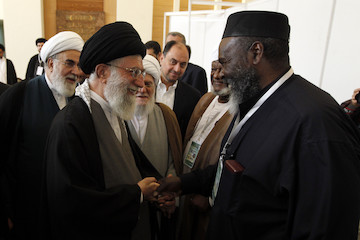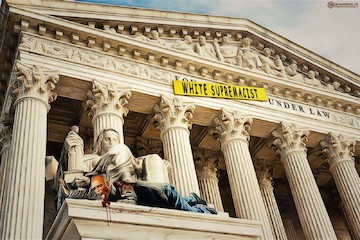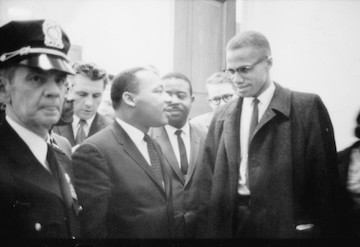American citizens may think that racism was buried by the Thirteenth Amendment, that racial segregation and discrimination against African Americans ended during the Civil Rights Movement of the 1960s, and that any remaining feeling of racial discrimination in American society came to an end with the election of a black president. Nowadays, however, not only is racism more widespread in the United States, but the election of Barack Obama made it even worse. A study by students of social psychology at the University of Stanford shows that the Obama presidency has caused people to favor Whites at the expense of Blacks. According to a theory in social psychology, it has been proven that people are more willing to express a potentially prejudiced attitude when their past behavior had given them a bit of credential as a non-prejudiced person.
By applying this theory to the election of Obama they found that people were more likely to express that whites were better suited than blacks for a police job in a force characterized by racial tension. A similar study found that people who scored higher on a measure of racism were particularly likely to increase the proportion of money they paid to a white organization rather than a black organization. According to these studies, the election of Obama just gave people the moral credentials necessary to increase their comfort expressing preferences for whites at the expense of blacks. Simply put, the election of Barack Obama to the office of president made whites more likely to be concerned that black rights were being given greater consideration than was previously the case, which then resulted in the concern that whites were suddenly in an unjust or unequal position, indicating (to the racist white population, at least) a license was issued to favor whites[1]. As this anonymous quote clearly expresses, “when you’re accustomed to privilege, equality feels like oppression.”
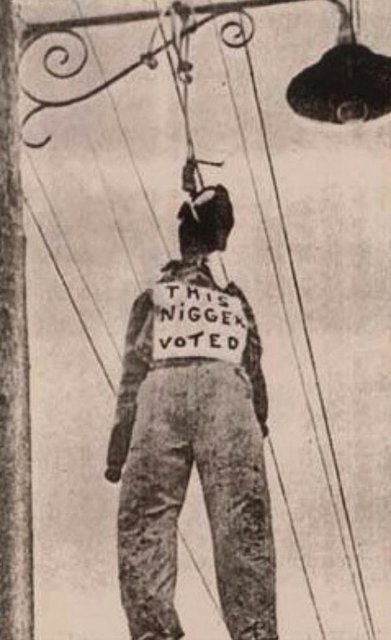
Another study found that with the election of Obama, as president, many Americans felt that Affirmative Action or other policies, aimed at reducing racial discrimination, were no longer needed; they felt racism had come to an end, since a black man had been elected President of the United States. Less support to address racial inequality was the result of this feeling, and caused racism to grow bolder in American society. This persistent problem allowed us to delve deeper into the many aspects of this American social disorder, that many people contend had its origins in the institution of slavery, which transferred a toxic legacy to European and American societies[2].
Although racism may be considered as only widespread within groups of “ordinary”, “lesser” educated people in American society, recent studies show that even academia is not immune to racist beliefs and that, actually, these views are prevalent among college professors. Over 6,500 professors at top US universities, drawn from 89 disciplines, and 259 institutions were in this survey[3]; each one received fictional but almost identical letters from prospective students, but different student names on them that connoted various races, ethnicities and genders. For example “Seiko Chen” as an Asian female; “Leisley Thomas” as a black female; “Brad Anderson” as a white male. The study revealed that white men were likely to receive between 80--87% acceptance rate, a staggering dominance [4]. A different name that connotes a different race can, surely, end up getting a different response; be a white man and the college says yes.
Medical services are the next place where racism exists at a high level. During a survey of more than 2,000 children in 550 hospitals, who visited the emergency room for abdominal pain between 2006 and 2009, it was revealed that black children were 39% less likely to receive pain medications compared to white children with the same medical situations [5]. When their pain was severe (rated 7 or higher on a pain scale from 0 to 10), an even larger disparity was noticed. The same study reveals that black and Hispanic children were more likely to have an extended length of stay compared with white children[5]. A later study in 2014 confirms these findings, by offering new results on how skin color can affect the way people perceive another person in pain and shows empathy towards them. In fact, this study reveals how racist feelings prevent people from showing empathy to black people in pain[6]. In a study of young people, results indicated that at an early age kids believe that their black classmates felt less pain[7] and that racial bias is not a matter of age in the US. If a viewpoint is formed at such an early age, it seems natural to see such perceptions in other parts of American society.
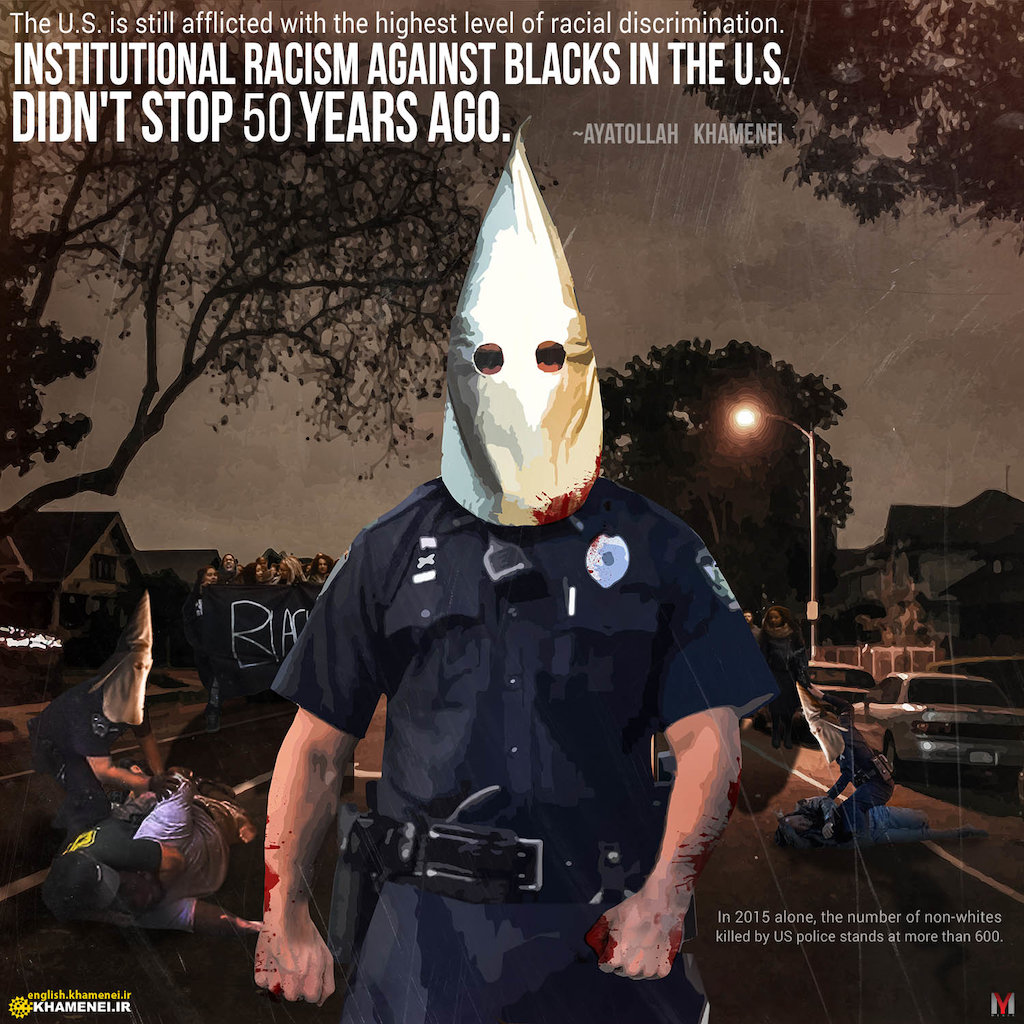
Another study by the Substance Abuse and Mental Health Data Archive, found that white people are more involved in the use of illegal drugs compared to blacks, but are less likely to go to jail for this crime. The percentage of different drugs used, based on race, according to this report is as follows:
Cocaine use was seen in 17.1% of whites and in 9.9% of blacks. Hallucinogens were used by 17.2% of whites and 6.7% of blacks. Inhalants were used by 9.6% of whites and by 3.2% of blacks. Forty-six percent of whites expressed marijuana use, while 40.2% of blacks said they used the drug. The use of crack among black people is the only case that surpasses that of whites, by only 1.6% more and stands as 5% of their total population in the US. Although the rate of drug use is higher among whites, African-Americans make up the majority of inmates who were jailed for possession and distribution of crack. In total, there are about 14 million whites and 2.6 million African Americans, in the United States, who use an illicit drug. Despite these facts, which reveal that drug use among whites is 5 times higher than among African Americans, African Americans are convicted for drug offenses at 10 times the rate of whites. Other facts point to more horrible disparities that work against African Americans who represent 12% of the total population of drug users, yet constitute 38% of those arrested for drug offenses, and 59% of state prisoners for a drug offense[8]. In this way, America’s criminal justice system perpetuates racial inequities and racism to feed the US prison industry. Law professor, civil rights advocate, and writer Michelle Alexander says in an interview for Teaching Tolerance, a project for the Southern Poverty Law Center:
“After years of representing victims of racial profiling and police brutality, and investigating patterns of drug law enforcement, and trying to help people who were released from prison face one barrier, one legal roadblock after another to get a job, getting access to housing, getting even food stamps–you know, I had an awakening that our criminal justice system now functions more like a system of racial and social control, than a system of crime prevention or control...”[9]
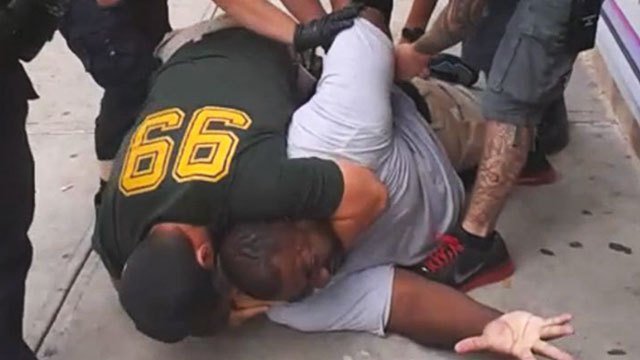
Apart from the higher rate of incarceration of blacks in contrast with whites, it is also noticeable that black people receive lengthier prison sentences than white Americans. Black inmates are convicted to 20% longer sentences than those served by white men for similar crimes[10]. The same is true for black women who are sure to receive longer prison sentences, based on the degree of their blackness[11]. The formal statistics related to this show that this trend is on the rise, and no sign of decline in this attitude is being observed[12].
Police in the US are indicated to have a high rate of racial bias against blacks, by considering them as more criminal. In a study, researchers tested 176 white police officers in large urban areas to investigate their levels of two distinct types of bias — prejudice and unconscious dehumanization of black people by comparing them to apes. It was found that that solely dehumanization and not police officers’ prejudice against blacks was associated with violent encounters against black children. That same study also found that white people showed racial feelings against African-American children, considering black children less innocent than white children[13].
There are also instances where black children are tried as adults and could be convicted by harsher sentences than white children. Among almost 2,500 juveniles in the US who have a life sentence without possibility of parole, nearly all (97%) were male and (60%) black[14]. In a study by Stanford University, an awful fact was revealed, which can be summarized as follows:
“… simply bringing to mind a black (vs. white) juvenile offender led participants to view juveniles in general as significantly more similar to adults in their inherent culpability and to express more support for severe sentencing.”[15]
This study shows that widespread and substantial racial disparities exist in juvenile sentencing that is ruled on by American courts. Black minors are sentenced to life without parole at a per capita rate, that is 10 times that of white minors[16]; in some states, this number stands somewhere between 18 and 48 times[17]. According to experts, the US courts are the only ones in the world to issue life sentences for juveniles without the possibility of parole[18], even though scientists confirm that the mental process of juveniles is different from that of an adult. Nonetheless, American courts get even more merciless when the skin of the juvenile offender is black; they are 22 percent more likely to receive a plea compared to white juveniles[19]. According to these objective findings, it seems completely reasonable to assume that the US government and the American criminal justice system are racist institutions[20].

Giving the above information to the whites in the US won’t spur them to support a reform in the American prison system. This is the subject of another study by Stanford University[21], which found that telling a white American about racist sentencing laws, that cause a large percentage of African Americans to go behind bars, will not increase the demand for prison reforms. Instead, it might actually garner more support from whites for more punitive policies against persons of color, even though various unjust laws are already in place – such as stop-and-frisk and three-strike laws. These laws are responsible for the disproportionate punishments against the black people. Researchers in a 2007 study write that:
“[O]ur most startling find is that many whites actually become more supportive of the death penalty upon learning that it discriminates against blacks.”
Many researchers have also found that murderers of white victims are more likely than murderers of black victims to be sentenced to death. This is what is being investigated in an article title “Looking Deathworthy,” where it was found that having a typical black characteristic will increase the likelihood of capital punishment for a black defendant[22].
Many American people hold stereotypical beliefs that associate dark skin with negative traits. One finding points to the fact that color bias is a widespread issue in the American society. "When an 'Educated' Black Man Becomes Lighter in the Mind’s Eye" is the title of this study, which claims to have able to provide enough evidence for the existing subconscious bias where educated black men are recalled as having lighter skin. In other words, successful black people are believed to be an exception in the black community rather than as evidence to end racist views against black people in general[23]. The existence of color bias is also true the other way around. That is to say, the lighter the person’s skin, the more they are perceived to be more intelligent, competent, trustworthy and reliable. This is the subject of another study that investigates the degree and significance of “white colorism”, which is a form of racism in American society.

As a result of these studies, on the big role racism plays in the American government and society, it is normal to imagine that people of color are facing difficulties for social and professional achievements in their lives, that there is a vicious cycle of one or more elements that keeps them in poverty, and again that poverty fuels more racist beliefs among the American whites. Another study confirms this by revealing that black people face a distinct disadvantage when applying for jobs, even though they have resumes superior to lighter-skinned black applicants[24].
Racism permeates all aspects of American society. Reports point to a high level of suspension disparity among American black students compared with their white classmates:
“Black students are suspended more than three times as often as their white classmates, twice as often as their Latino classmates, and more than 10 times as often as their Asian classmates in middle and high schools nationwide, a new study shows.”[25]
These suspensions may cause students to dropout, ultimately, leading to stained criminal records, beginning with suspensions from the preschool years. There are big racial differences in preschool years as well; students of color are much more likely to be suspended or expelled than white students, even while the infractions are the same[26].
In this manner, the racist thread continues in American society right from the time the first enslaved African was forced to put his feet on American soil. Historical racism still exists in the context of modern slavery, but it has also been coupled with socio-economic inequality in the US. As a result, racial stratification continues to occur in employment, housing, education, lending, and government, making it possible for this kind of racism to exist in every corner of American life and earning the title of institutional racism, which is part of the American lifestyle[27].
African Americans, for example, are almost 3 times more likely than non-Hispanic whites to be poor, nearly six times as likely to be put behind the bars, and only half as likely to graduate from college. The average wealth of white households in the United States is 13 times as high as that of black households[28].
It is often perceived by the American people that the poor educational opportunities and less social success among African Americans is directly associated with their race. In another comprehensive study, it is said that:
“...educational outcomes for minority children are much more a function of their unequal access to key educational resources, including skilled teachers and quality curriculum, than they are a function of race. In fact, the US educational system is one of the most unequal in the industrialized world, and students routinely receive dramatically different learning opportunities based on their social status. In contrast to European and Asian nations that fund schools centrally and equally, the wealthiest 10 percent of US school districts spend nearly 10 times more than the poorest 10 percent, and spending ratios of 3 to 1 are common within states. Despite stark differences in funding, teacher quality, curriculum, and class sizes, the prevailing view is that if students do not achieve, it is their own fault. If we are ever to get beyond the problem of the color line, we must confront and address these inequalities.”[29]
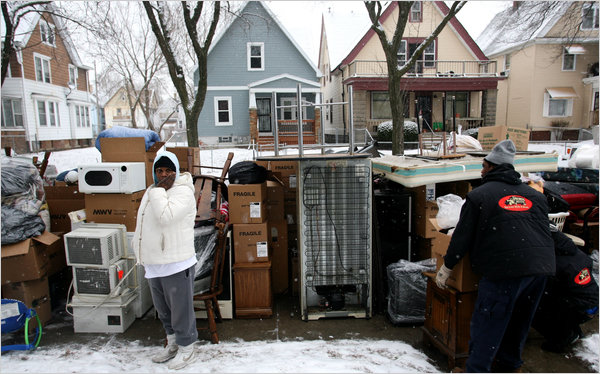
Black woman with her belongings on a Milwaukee street after eviction. Photo: Ryan for The New York Times.
In his 2009 visit to the United States, UN Special Rapporteur on Racism, Doudou Diene noted:
"Socio-economic indicators show that poverty and race and ethnicity continue to overlap in the United States. This reality is a direct legacy of the past, in particular slavery, segregation, the forcible resettlement of Native Americans, which was confronted by the United States during the civil rights movement.”
A report by ABC News found that even large sections of Americans admit to bearing discriminatory viewpoints. In a 2007 report, ABC News stated that 1 in 10 American whites admitted to holding racial bias against Hispanic-Americans and about 1 in 4 had the same feeling against Arab-Americans[30].
Racism against minorities in the United States is being recounted in endless scientific and non-scientific articles, and in different social and governmental institutions. Still, the American government holds itself on a moral high-ground to accuse and criticize other countries of racial discrimination.
References
[1] Endorsing Obama licenses favoring Whites. Effron, Daniel A., Cameron, Jessica S. and Monin, Benoît. s.l. : Journal of Experimental Social Psychology, 2009, Vol. 45. p. 590-593 Available at: http://faculty.haas.berkeley.edu/jesss/Effron,%20Cameron,%20&%20Monin,%202009.pdf.
[2] Olusoga, David. The roots of European racism lie in the slave trade, colonialism – and Edward Long . The Guardian. [Online] 09 08, 2015. [Cited: 02 23, 2016.] http://www.theguardian.com/commentisfree/2015/sep/08/european-racism-africa-slavery.
[3] Milkman, Katherine L., Akinola, Modupe and Chugh, Dolly. What Happens Before? A Field Experiment Exploring How Pay and Representation Differentially Shape Bias on the Pathway into Organizations. Social Science Research Network. [Online] 12 13, 2014. [Cited: 03 23, 2016.] http://papers.ssrn.com/sol3/papers.cfm?abstract_id=2063742.
[4] Jaschik, Scott. The Bias for White Men. Inside Higher Ed. [Online] 04 24, 2014. [Cited: 02 23, 2016.] https://www.insidehighered.com/news/2014/04/24/study-finds-faculty-members-are-more-likely-respond-white-males-others.
[5] Ethnic disparities exist in ER pain management for children with abdominal pain. Science Daily. [Online] 09 23, 2013. [Cited: 02 23, 2016.] http://www.sciencedaily.com/releases/2013/09/130923200133.htm.
[6] Racism and the Empathy for Pain on Our Skin. Forgiarini, Matteo, Gallucci, Marcello and Maravita, Angelo. 108, s.l. : Front Psychol., 2011, Vol. 2. Available at: http://www.ncbi.nlm.nih.gov/pmc/articles/PMC3108582/.
[7] Samarrai, Fariss. Study: Racial Bias in Pain Perception Appears Among Children as Young as 7 - See more at: https://news.virginia.edu/content/study-racial-bias-pain-perception-appears-among-children-young-7#sthash.NWA1taLk.dpuf. University of Virginia. [Online] 02 27, 2014. [Cited: 02 23, 2016.] https://news.virginia.edu/content/study-racial-bias-pain-perception-appears-among-children-young-7.
[8] Criminal Justice Fact Sheet. National Association for the Advancement of Colored People. [Online] 07 07, 2010. [Cited: 02 23, 2016.] http://www.naacp.org/pages/criminal-justice-fact-sheet.
[9] A Conversation with Michelle Alexander. Teaching Tolerance. [Online] 09 23, 2014. [Cited: 02 23, 2016.] http://www.tolerance.org/magazine/number-48-fall-2014/alexander.
[10] Hansen, Mark. Black prisoners are given longer sentences than whites, study says. Applied Behavior Analysis Journal. [Online] 02 15, 2013. [Cited: 03 23, 2016.] http://www.abajournal.com/news/article/black_prisoners_tend_to_serve_longer_sentences_than_whites.
[11] The impact of light skin on prison time for black female offenders. Viglione, Jill, Hannon, Lance and DeFina, Robert. 1, Villanova : The Social Science Journal, 2011, Vol. 48.
[12] Saris, Patti B. et all. Report on the Continuing Impact of United States v. Booker on Federal Sentencing. Washington, D.C. : United States Sentencing Commision, 2012. Available at: http://www.ussc.gov/sites/default/files/pdf/news/congressional-testimony-and-reports/booker-reports/2012-booker/Part_A.pdf#page=5.
[13] Goff, Phillip Atiba. Black Boys Viewed as Older, Less Innocent Than Whites, Research Finds. American Psychological Association. [Online] 05 06, 2014. [Cited: 02 23, 2016.] http://www.apa.org/news/press/releases/2014/03/black-boys-older.aspx.
[14] Beale, Lewis. Study: More Black Juveniles Sentenced to Life Without Parole. Pacific Standard Magazine. [Online] 02 29, 2012. [Cited: 02 23, 2016.] http://www.psmag.com/books-and-culture/study-more-black-juveniles-sentenced-to-life-without-parole-40144.
[15] Rattan, Aneeta, et al., et al. Race and the Fragility of the Legal Distinction between Juveniles and Adults. Public Library Of Science. [Online] 05 23, 2012. [Cited: 03 23, 2016.] http://journals.plos.org/plosone/article?id=10.1371/journal.pone.0036680#pone.0036680-Jordan1.
[16] Facts and Infographics about Life Without Parole for Children. The Campain for the Fair Sentencing of Youth. [Online] [Cited: 02 23, 2016.] http://fairsentencingofyouth.org/what-is-jlwop/.
[17] The Rest of Their Lives: Life without Parole for Youth Offenders in the United States in 2008 . Human Rights Watch. [Online] 05 2008. [Cited: 02 23, 2016.] https://www.hrw.org/sites/default/files/reports/us1005execsum.pdf.
[18] Juvenile Life Without Parole (JLWOP). Center for Children's Law and Policy. [Online] 02 13, 2011. [Cited: 02 23, 2016.] http://www.cclp.org/jlwop.php.
[19] Lee, Trymaine. Juvenile Offenders Sentenced To Life Can Face Harsher Treatment Than Adults: Report. HuffPost Black Voices. [Online] 05 15, 2012. [Cited: 02 23, 2016.] http://www.huffingtonpost.com/2012/05/15/juvenile-offenders-life-sentence-_n_1519298.html.
[20] Quigley, Bill. Fourteen Examples of Systemic Racism in the US Criminal Justice System. Common Dreams. [Online] 07 16, 2010. [Cited: 02 23, 2016.] http://www.commondreams.org/views/2010/07/26/fourteen-examples-systemic-racism-us-criminal-justice-system.
[21] Tonn, Shara. Stanford research suggests support for incarceration mirrors whites' perception of black prison populations. Stanford News. [Online] 08 06, 2014. [Cited: 02 23, 2016.] http://news.stanford.edu/news/2014/august/prison-black-laws-080614.html.
[22] "Looking Deathworthy: Perceived Stereotypicality of Black Defendants Predicts Capital-Sentencing Outcomes. Eberhardt, Jennifer L., et al., et al. 41, New York : Cornell Law Faculty Publications, 2006. Available at: http://scholarship.law.cornell.edu/cgi/viewcontent.cgi?article=1040&context=lsrp_papers.
[23] Morsella, Ezequiel. Study Reveals The Unconscious Bias Towards Dark Skin People We Already Knew Existed. Huffington Post Black Voices. [Online] 01 23, 2014. [Cited: 02 23, 2016.] http://www.huffingtonpost.com/2014/01/14/skin-tone-bias_n_4597924.html.
[24] Unknown. Skin tone more important than educational background for African Americans seeking jobs. Eureka Alert. [Online] 08 15, 2006. [Cited: 02 23, 2016.] http://www.eurekalert.org/pub_releases/2006-08/uog-stm081106.php.
[25] Kelman, Brett M. Study: Black students suspended more often than others. USA Today. [Online] 05 12, 2013. [Cited: 02 23, 2016.] http://www.usatoday.com/story/news/nation/2013/05/12/black-student-suspensions/2151423/.
[26] Black Preschoolers Far More Likely To Be Suspended. National Public Radio. [Online] 03 21, 2014. [Cited: 02 23, 2016.] http://www.npr.org/sections/codeswitch/2014/03/21/292456211/black-preschoolers-far-more-likely-to-be-suspended.
[27] Nesbit, Jeff. Institutional Racism Is Our Way of Life. US News. [Online] 05 06, 2015. [Cited: 02 23, 2016.] http://www.usnews.com/news/blogs/at-the-edge/2015/05/06/institutional-racism-is-our-way-of-life.
[28] Racial Inequality After Racism. Tribune Content Agency. [Online] Foreign Affairs Magazine, 02 20, 2015. [Cited: 02 23, 2016.] http://tribunecontentagency.com/article/racial-inequality-after-racism/.
[29] Quintana, Stephen M, et all. Ethnic and Racial Disparities in Education: Psychology’s Contributions to Understanding and Reducing Disparities. American Psychological Association . [Online] 08 03, 2012. [Cited: 02 23, 2016.] https://www.apa.org/ed/resources/racial-disparities.pdf.
[30] Aquí Se Habla Español – and Two-Thirds Don’t Mind. ABC News. [Online] 10 08, 2007. [Cited: 02 23, 2016.] http://abcnews.go.com/images/US/1048a1Hispanics.pdf.


